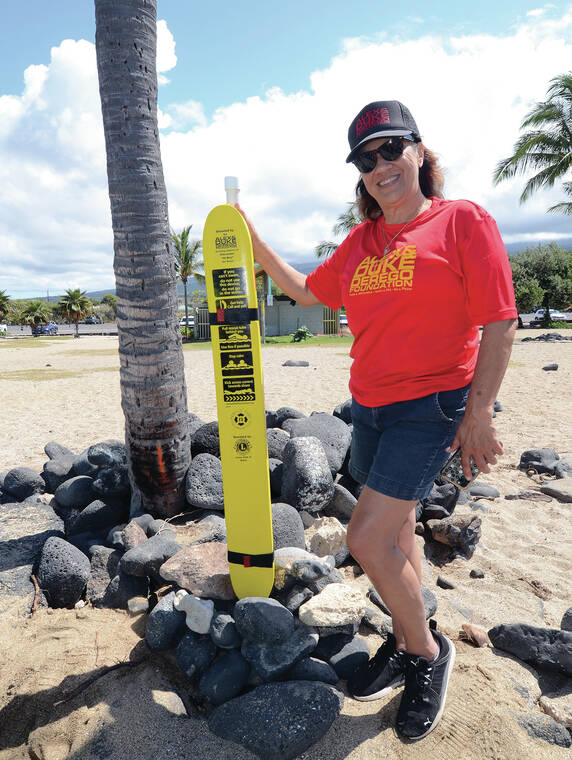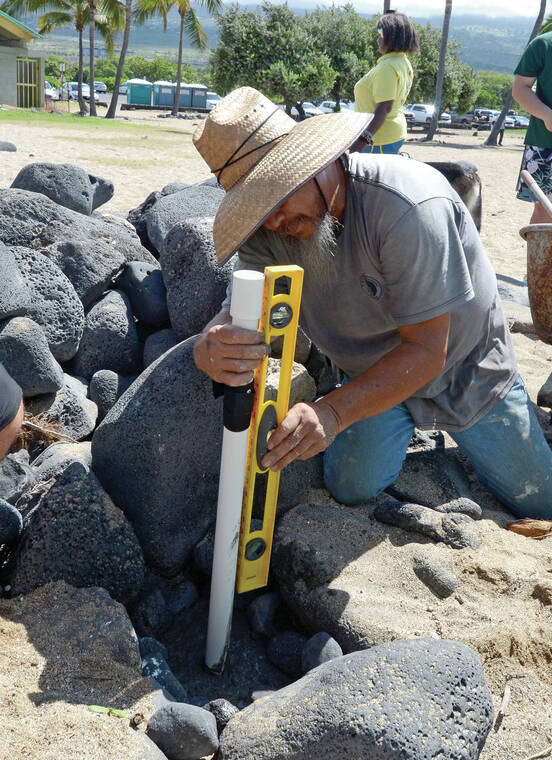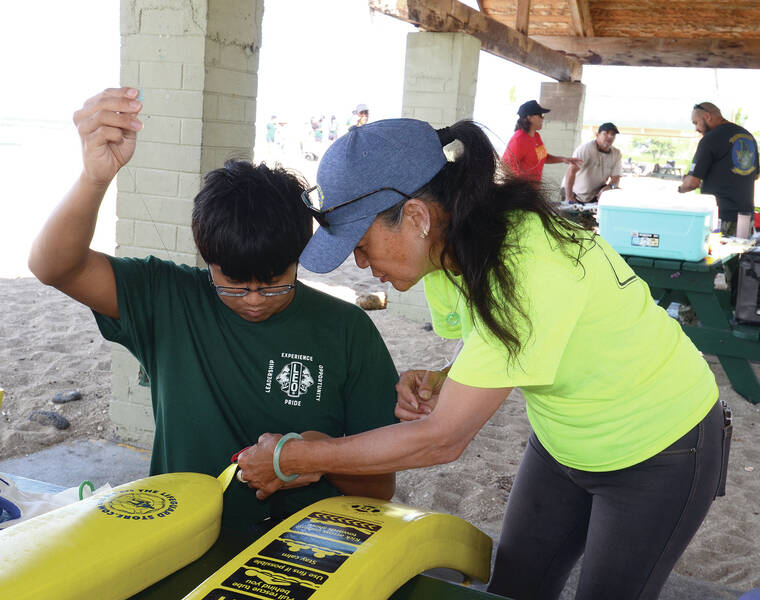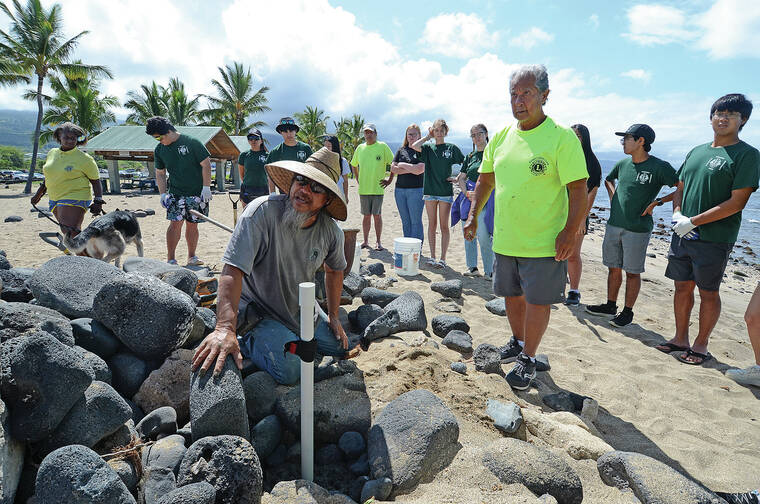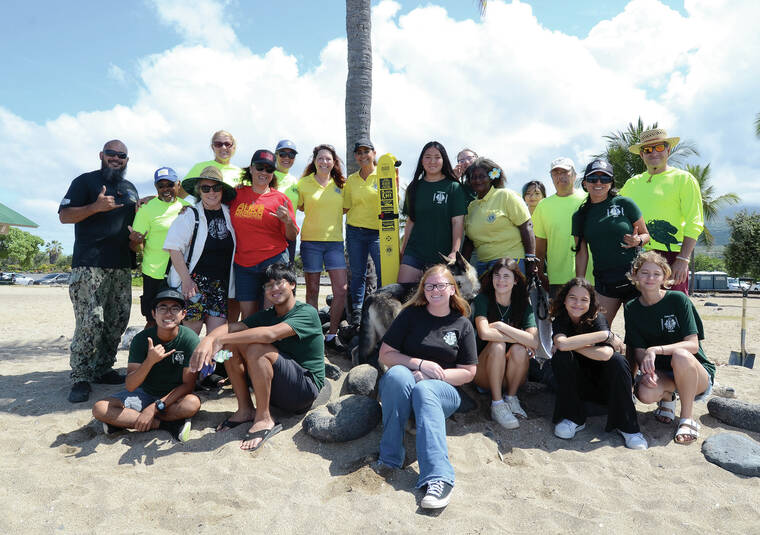Some Kona beaches became safer on Saturday thanks to the Lions Club of Kona and the Alex and Duke DeRego Foundation’s efforts to bring rescue tubes to six popular spots with their “Rescue Tubes to the Rescue” campaign.
Lion Linda Ross Myers first heard about the rescue tube initiative while attending a meeting at the Kawaii Kai Lions Club on Oahu. She pitched the idea of installing the water-safety flotation devices at West Hawaii beaches and began fundraising to purchase the tubes.
“We bought a dozen tubes that arrived in the November before COVID,” she said. “And they sat there until now.”
Each 52-inch-long bright yellow tube can hold up to three people for multiple hours out on the water.
The club had problems trying to obtain permits to place the tubes at county and privately owned beach parks until they partnered with the foundation, which had the expertise in navigating the permit process.
The Alex and Duke DeRego Foundation is dedicated to providing ocean safety and lifesaving training to kids, including CPR and first aid. The program serves middle school students around the island.
The foundation was born out of tragedy. In 2005, 12-year-old Alex DeRego was lost while camping with his family in South Kona. The family believes he fell into the ocean while night fishing. Rescuers, family and friends searched the for five days, but his body was never found.
Five years later, Alex’s brother, 14-year-old Dule DeRego, was involved in a fatal accident when he was thrown from the golf cart he was riding in, sustaining massive head trauma.
The boys’ mother, Shirley, created the foundation in her sons’ memories to bring awareness and teach prevention.
She previously has supported the rescue tube distribution on Kauai, the first island to install them at beaches.
“Thanks to the Lions Club, we can get them on our beaches,” she said.
On Saturday, DeRego, Lions Club and Konawaena Leo Club members started their day at Old Kona Airport Park to install three of the tubes. Concrete was poured to secure the frames for the tubes, and the volunteers set out to put the lifesaving devices along the beach.
From there, additional tubes were installed at End of the World, Honls, Magic Sands, Kua Bay and Kahaluu Beach Park.
Besides providing them at beaches without lifeguards, the tubes are at lifeguard-staffed parks for use after their shift is over but the park is still open.
“Rescue Tubes to the Rescue” Chair Tammy L. Coker wants to expand the program.
“I want one at all of the beaches on the Big Island,” she said. “By partnering with the community, we can.”
Currently there are about 35 tubes at 25 beaches around the island.
DeRego said the foundation is developing an app so beachgoers can locate where the tubes are available.
“Families might want to look it up, so they can set up where there is one close by,” she said. “It is proven to save lives.”
Rescue tubes at some of the beaches have been stolen or sustained damage, which the Lions Club aims to replace with new ones.
“We want the community to know they are here for an emergency, but to please bring them back when you are done,” said Michelle Johnson.
“Together, we can do great things.”


